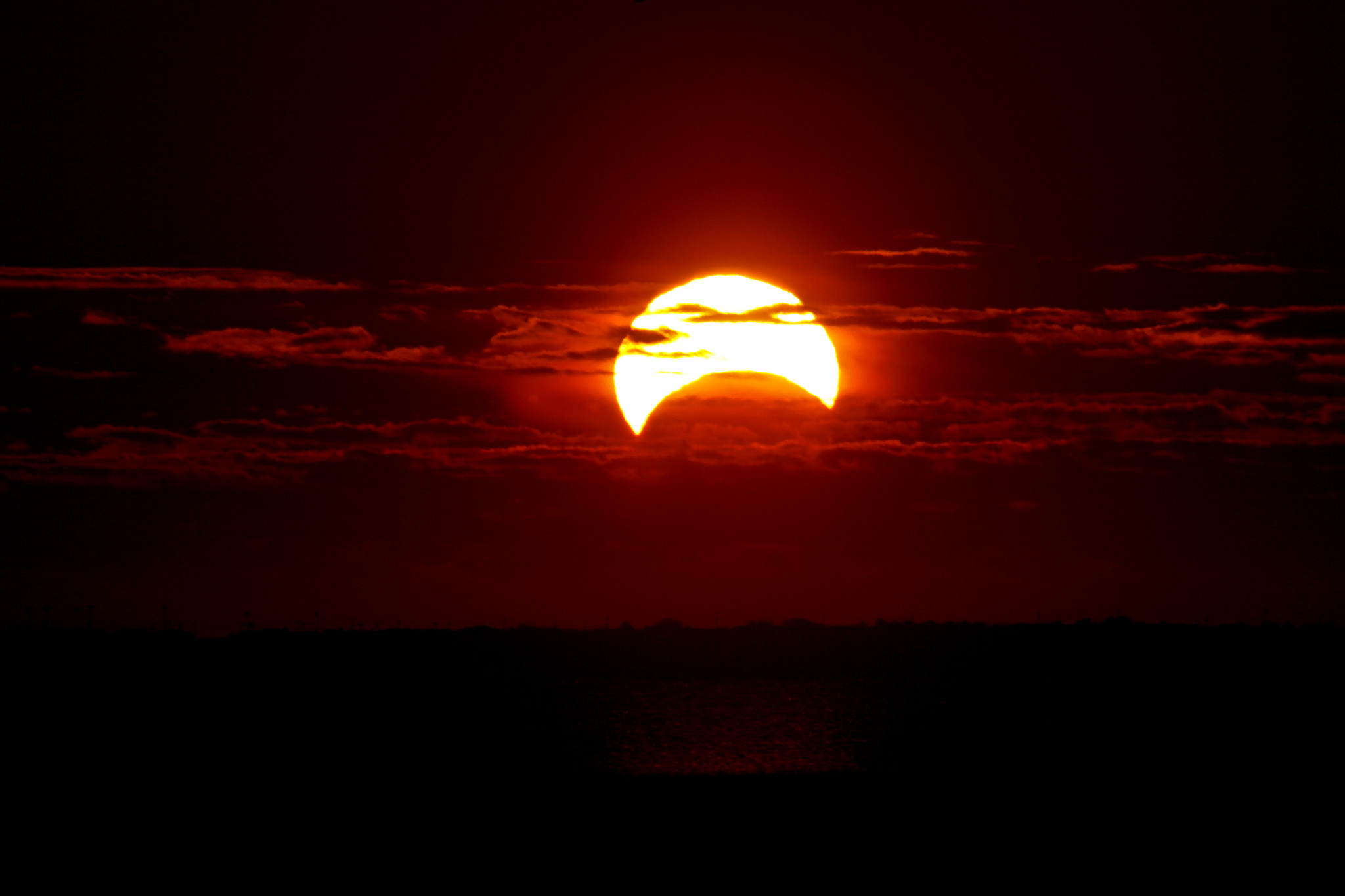Will the sky get dark enough during the eclipse for us to see other stars in the sky? During totality, yes! When the eclipse is total, the light that reaches us from the Sun is thousands of times dimmer than a partially eclipsed Sun. (This is why you should wear eclipse glasses at all moments except the brief two minutes of totality.)
Using Stellarium, I took a snapshot of what the sky will look like near the eclipsed Sun.

A snapshot with Stellarium software of what will be in the sky near the eclipsed Sun on 21 August 2017. Although the coordinates used for this snapshot are those for Weiser, Idaho, to the naked eye there will be little difference between this view and that for any other location in the path of totality.
Notice that the bright star Regulus will be very close to the eclipsed Sun. Regulus is the same star near which a conjunction between Jupiter and Venus that Stellarium gives as June 17 in the year -1 (which I assume corresponds to 2 BC because Stellarium uses a year zero) may have been the “star” the Magi followed (I plan to write more extensively about this in the future).
Both Mars and Mercury will be close to the Sun in the sky. I am especially excited at the prospect of seeing Mercury for the first time. I have tried on several occasions and have not yet succeeded. For those who observe not too close to sunset, Venus will also be in the sky, leading the Sun, about four times further from the Sun than Mars. Jupiter will be a little further away from the Sun than Venus, and in the opposite direction. From where I’ll be observing, Jupiter will still be below the horizon, but it will have risen for most observers in the US.

A more zoomed out snapshot with Stellarium software. The coordinates chosen for this one are those for Carbondale, Illinois. The brightest object in the sky during the total eclipse will be Venus. Jupiter will also be bright. Bright stars that are not pictured but will probably be in the sky, depending on your viewing location, are Sirius (southwest of Procyon), Capella (northwest of Venus), and Arcturus (north of Jupiter). Make sure you don’t confuse these with Jupiter and Venus.
During the partial phases of the eclipse, although the light from the Sun will be reduced, it will still be brighter than a Full Moon (and you should not look at it without eclipse glasses). If any other celestial object will be visible, it’ll be Venus. Venus will be west of the Sun, in the constellation Gemini. Jupiter and Sirius are the next brightest objects. Don’t spend too much time looking at the planets and stars rather than the eclipse. Knowing ahead of time what will be up there, however, will undoubtedly enhance the experience.

